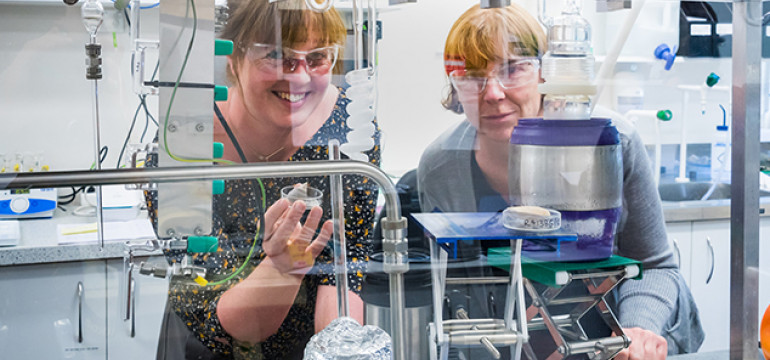East Coast shellfish unlock earthquake history
Watch the footage here(external link).
New EQC-funded research will enable scientists to pinpoint with more accuracy the frequency and size of large past earthquakes and tsunamis on the east coast of the North Island.
By radiocarbon dating shells, GNS Science researcher Dr Kate Clark will provide data to better forecast future events and prepare communities for what may be in store along the Hikurangi subduction zone.
The Hikurangi subduction zone is thought to have generated around 10 large or super-large (up to Mw 8.9) earthquakes over the past 7000 years and runs offshore from Gisborne to the top of the South Island.
Dr Clark says until now the dating of past earthquakes has not been accurate enough to build a picture of what the future could bring.
“Shellfish that died when parts of the coastline were suddenly lifted up, or dropped down, by previous earthquakes can give us information about the size and locations of past earthquakes. But we are limited in the precision of how we date the shells because we lack some critical local information about carbon in our marine waters,” she says.
Dr Clark says her new research aims to pinpoint each event to within about 50 years.
The key to unlock the carbon dating puzzle is located in the bowels of Te Papa, which houses New Zealand’s finest shell collection.
“We are very lucky that Te Papa has a collection of over 300,000 lots of shells, comprising several million specimens, dating back into the 1800s with notes of exactly where and when they were collected and when the shellfish died,” she says.
Dr Clark explains that radiocarbon dating the Te Papa shells in relation to the time when they were collected, enables her to calculate the age of other shells that died in past earthquake and tsunamis along the east coast.
“Previously we used a New Zealand-wide average correction, but we suspected that was not suitable for the Hikurangi subduction zone and our earthquake ages could be wrong by up to 200 years at some locations,” she says.
Dr Clark says the team has processed the first samples and believes they are on track to significantly improve the precision of ages for past earthquakes.
Dr Clark’s research is still feeling the impact of the nuclear testing conducted in the Pacific and is not able to use any shells after nuclear testing 1952.
“The nuclear bombs caused all the carbon isotopes in the atmosphere and ocean to go haywire, so the carbon dating on any shellfish that died after 1952 is no longer reliable,” she says.
Dr Clark says better radiocarbon dating will give a lot more confidence in building the prehistorical earthquake and tsunami record for the North Island’s east coast and presenting a realistic picture of hazards for the future.
Aside from hazard modelling, Dr Clark says the new formula will also provide critical data for other scientists.
“Archaeologists and climate change scientists will also find this very helpful in their research,” says Dr Clark, who adds she is grateful that EQC funding has enabled her to do this research.
“This kind of underpinning research does not fit into any normal category, so it was hard to get funding, but it is really important data for New Zealand.”
EQC’s Dr Jo Horrocks says that EQC is pleased to be supporting the project which will provide critical data for understanding New Zealand’s natural hazard risk. “There is a lot of research going on in regard to the Hikurangi subduction zone, and accurately dating past earthquakes is an important piece of the puzzle.
“The better we can understand what happened in the past, the better local communities and councils can understand the risk posed by large earthquakes and prepare to reduce the impact.”
